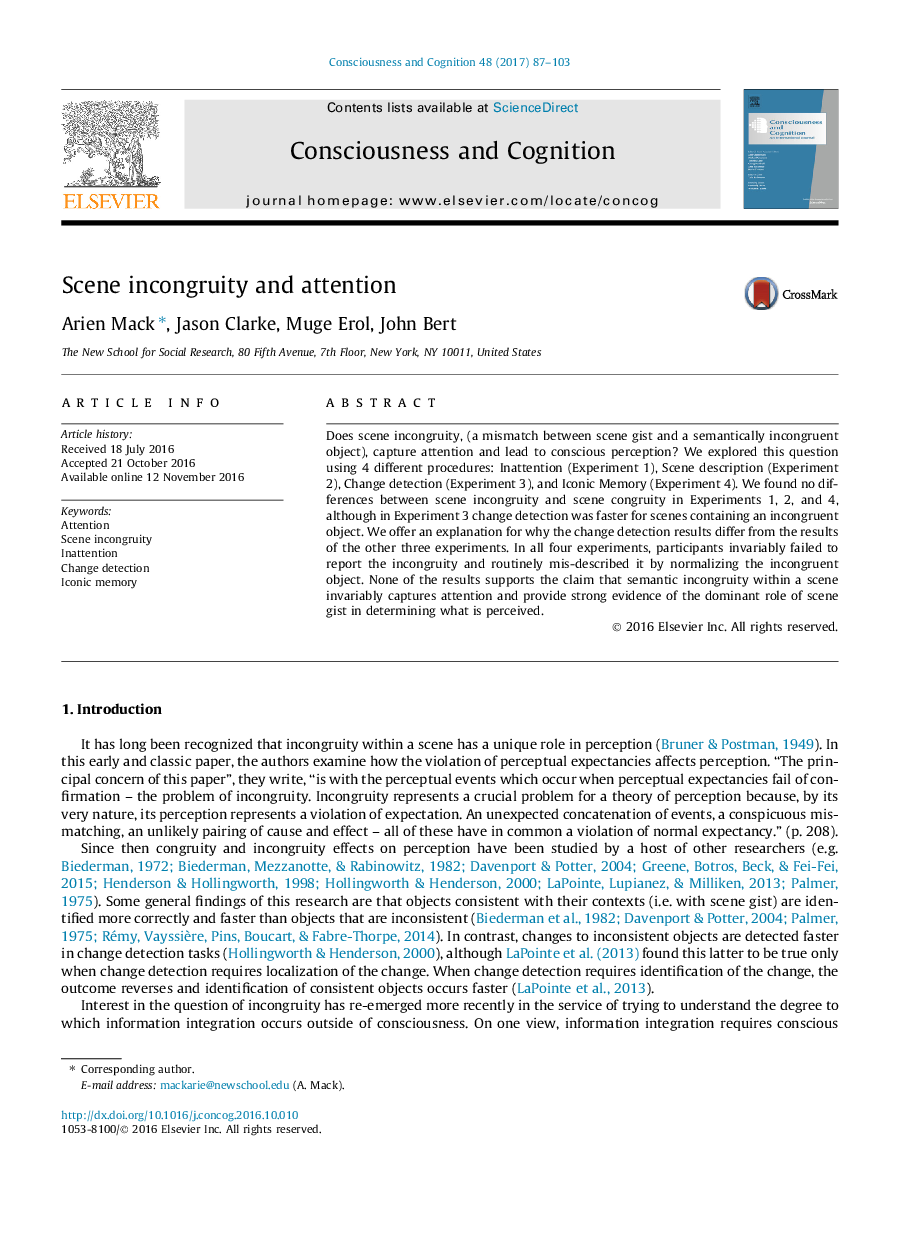| Article ID | Journal | Published Year | Pages | File Type |
|---|---|---|---|---|
| 5041896 | Consciousness and Cognition | 2017 | 17 Pages |
â¢Scene incongruity does not reduce inattentional blindness or affect iconic memory.â¢Change detection is faster for incongruent objects.â¢Scene incongruity is rarely reported.â¢Scene gist dominates perception.â¢Incongruity does not capture attention.
Does scene incongruity, (a mismatch between scene gist and a semantically incongruent object), capture attention and lead to conscious perception? We explored this question using 4 different procedures: Inattention (Experiment 1), Scene description (Experiment 2), Change detection (Experiment 3), and Iconic Memory (Experiment 4). We found no differences between scene incongruity and scene congruity in Experiments 1, 2, and 4, although in Experiment 3 change detection was faster for scenes containing an incongruent object. We offer an explanation for why the change detection results differ from the results of the other three experiments. In all four experiments, participants invariably failed to report the incongruity and routinely mis-described it by normalizing the incongruent object. None of the results supports the claim that semantic incongruity within a scene invariably captures attention and provide strong evidence of the dominant role of scene gist in determining what is perceived.
